Edward Green’s most well-known and sought-after models are Galway, Dover and Chelsea, which are boots, Derby and Oxford respectively. What about loafer? There are three candidates, Piccadilly, Belgravia and Duke. where Duke is relatively rare or buried in the dust of history and only recently resurrected. So, the winner will have to come from Piccadilly and Belgravia. Piccadilly should sell more because it is the more common and accepted penny loafer while Belgravia as tassel loafer only appreciated by seasoned customers.
Penny loafer is the style that almost every shoe brand is making, but you can find some many iconic ones from time to time, we have to admit that the most classic thing has the wildest livelihood.
Piccadilly may not be ranked in the top three most iconic penny loafers, because John Lobb Lopez, J.M. Weston 180 and Berluti Andy inarguably stand in front. But every model offered by Edward Green is a staple which cannot be neglected.
Let us check this pair.
Unboxing

The colour of Edward Green shoe box is so recognizable and even there is only logo but no brand name, people wouldn’t mistake.
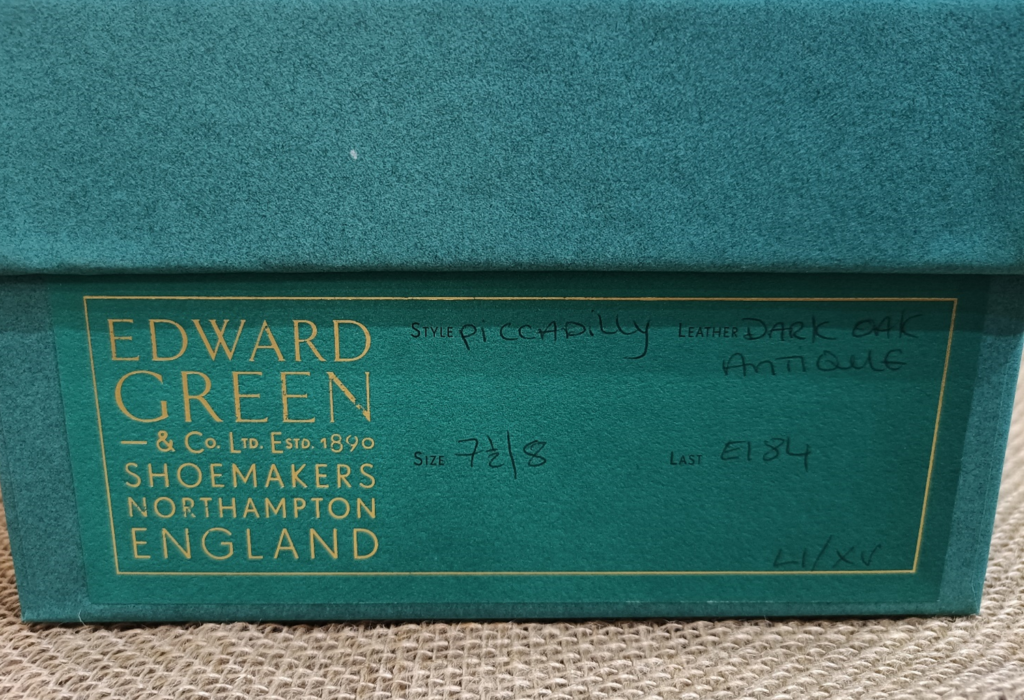
Information on sticker attached on the side of shoebox writes: style Piccadilly, leather Dark Oak Antique. Dark Oak is an iconic colour/leather from Nevada leather collection manufactured by French tannery Haas. Antique is their own blackening process. Size 7.5/8. Edward Green’s sizing is particularly misleading, and it does not mean the shoes are between 7.5 and 8 but the latter number is US size. The last 184 is one of Edward Green’s most classic lasts and the most received one for loafer.
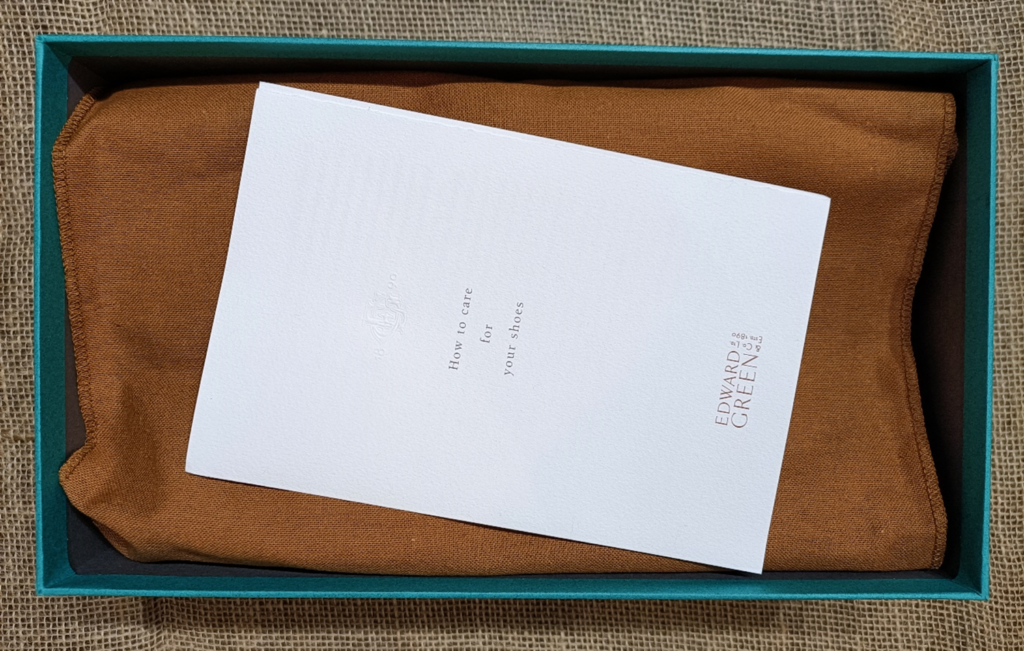
Uncover the shoe box, a brochure on top in which is how to care for leather shoes.

The content is worth a read.
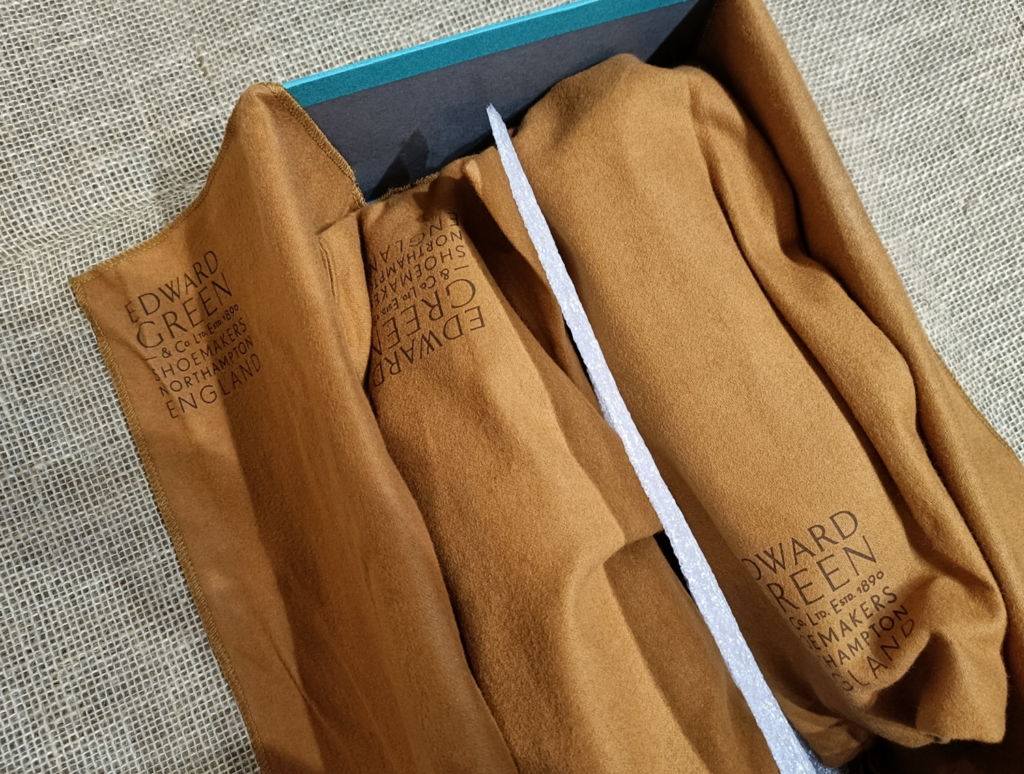
This color of shoeshine cloth and shoe bag look like cashmere but maybe not.
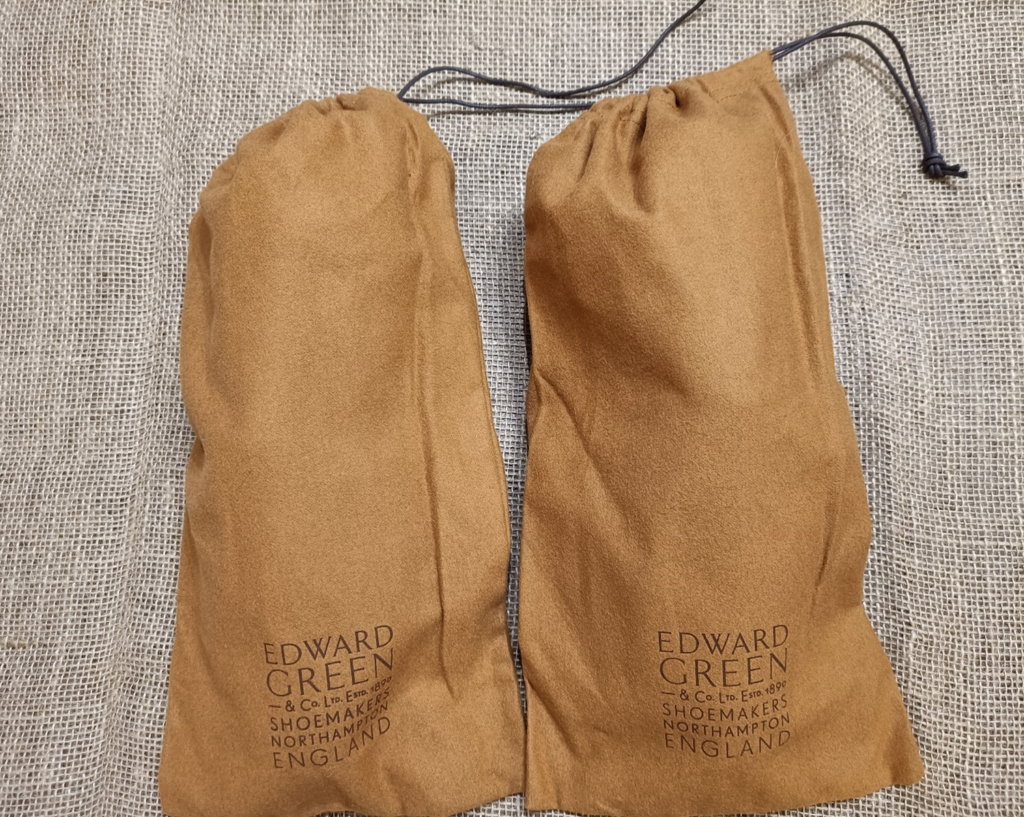
This color is, indeed, very pleasing to the eye and luxury.
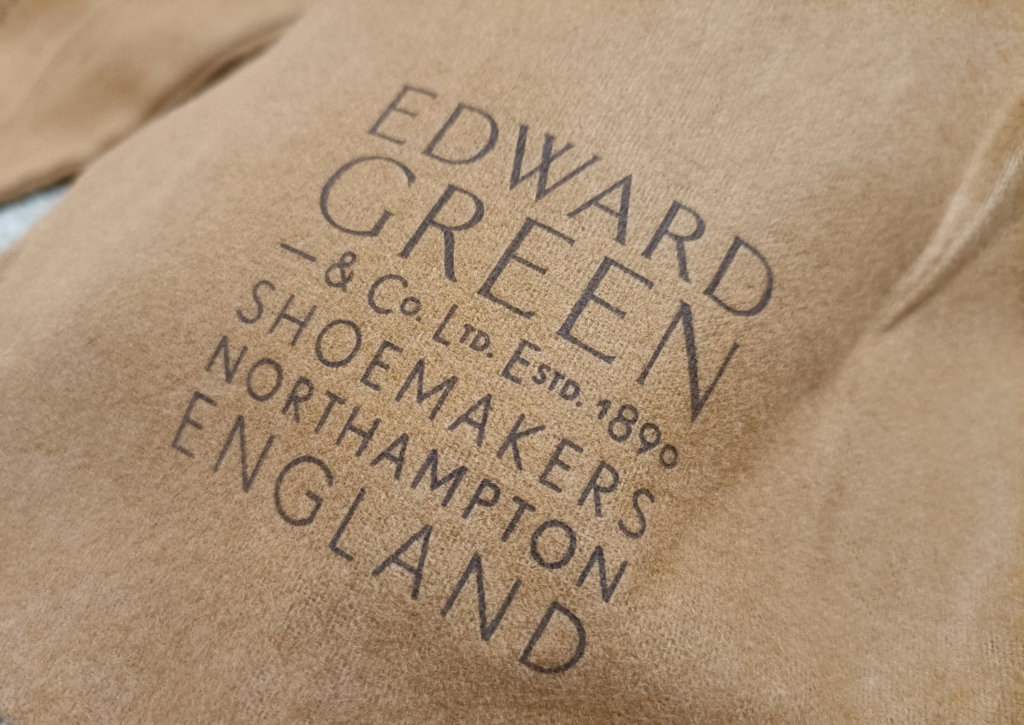
I looked very carefully, and I’m not sure what material this is, anyway, the feel is certainly not cashmere.
Last
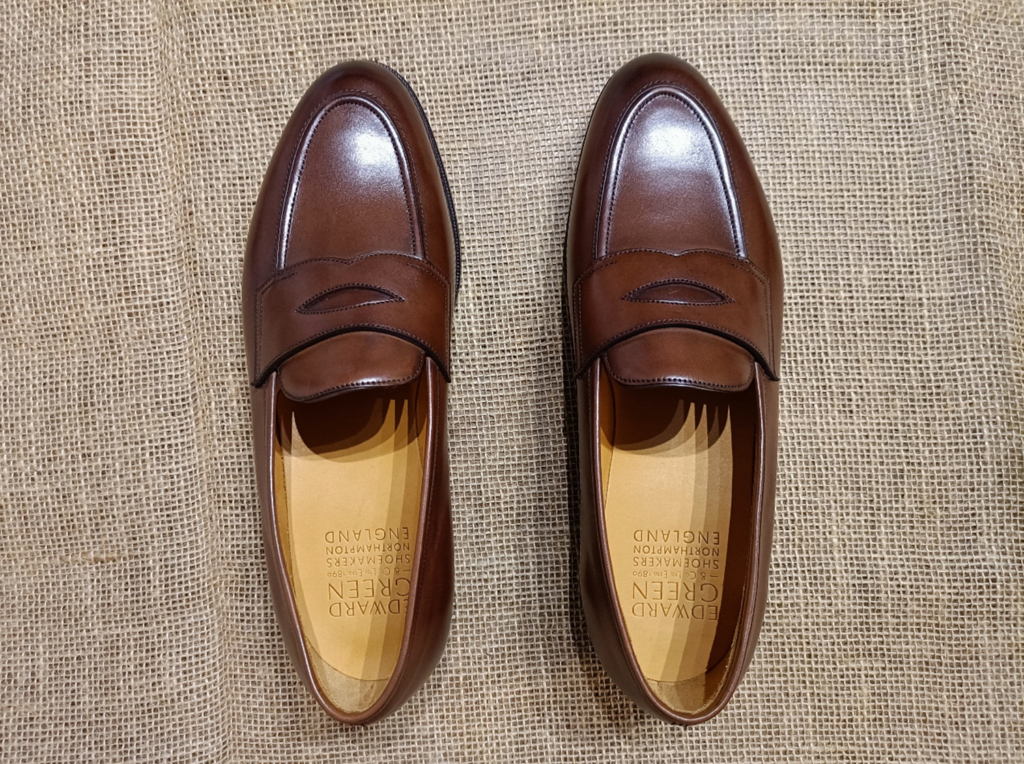
It is reasonable to say that loafer last should be a shorter and rounder than lace-up shoes, which is to harmonize with the low instep. But last 184 is obviously narrower and pointed than last 202. The apron area also visually changes the roundness of the toe to some extent. Overall, the 184 is a little too pointed for me.
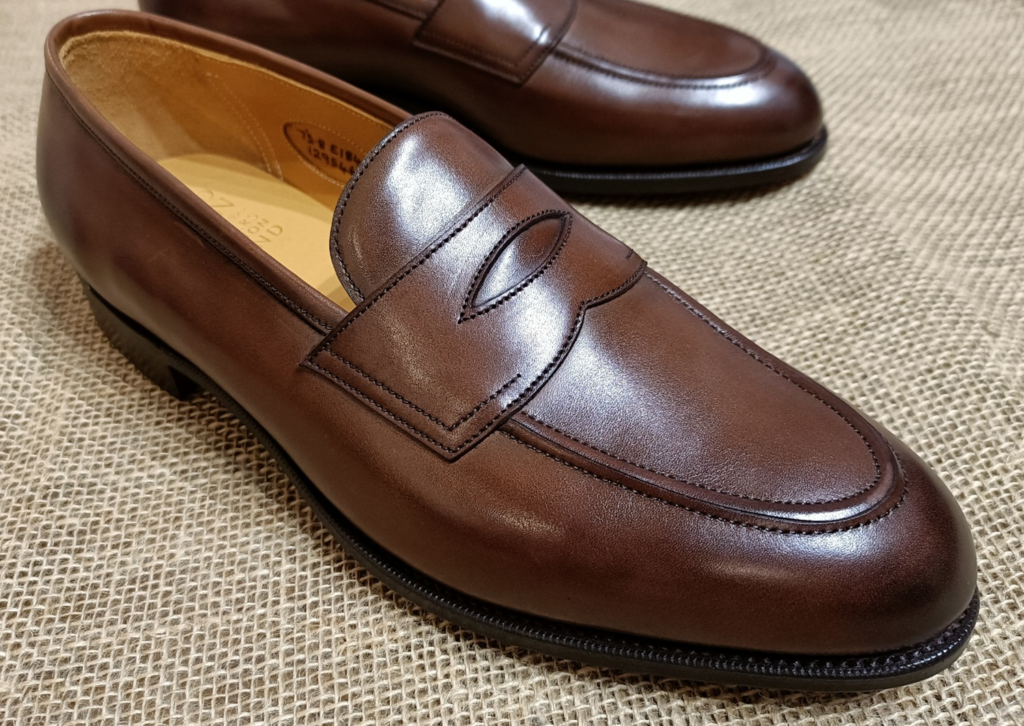
Top view looks slightly sharp and profile view gives people a sense of rounded and silly. This sense of roundness, mainly from the height of the high forehead and the full widest part.
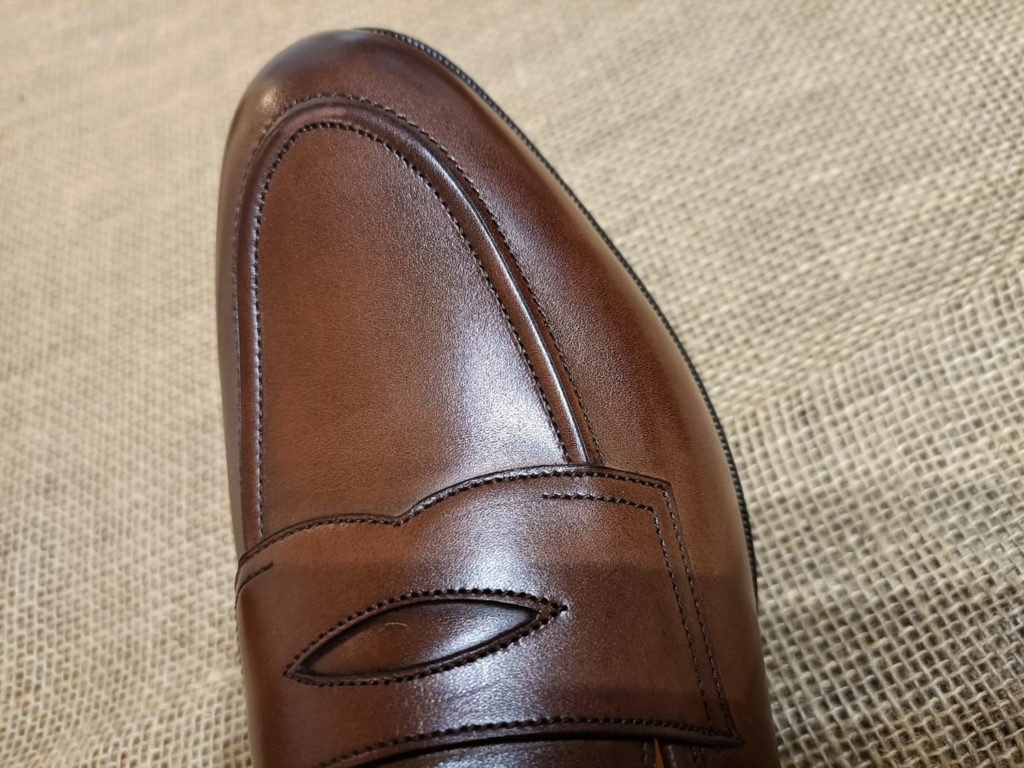
This angle manifests the same problem I found on last 32 which is that the transition from toe to widest part is not quite natural, as if there is a concave in the middle.
Pattern
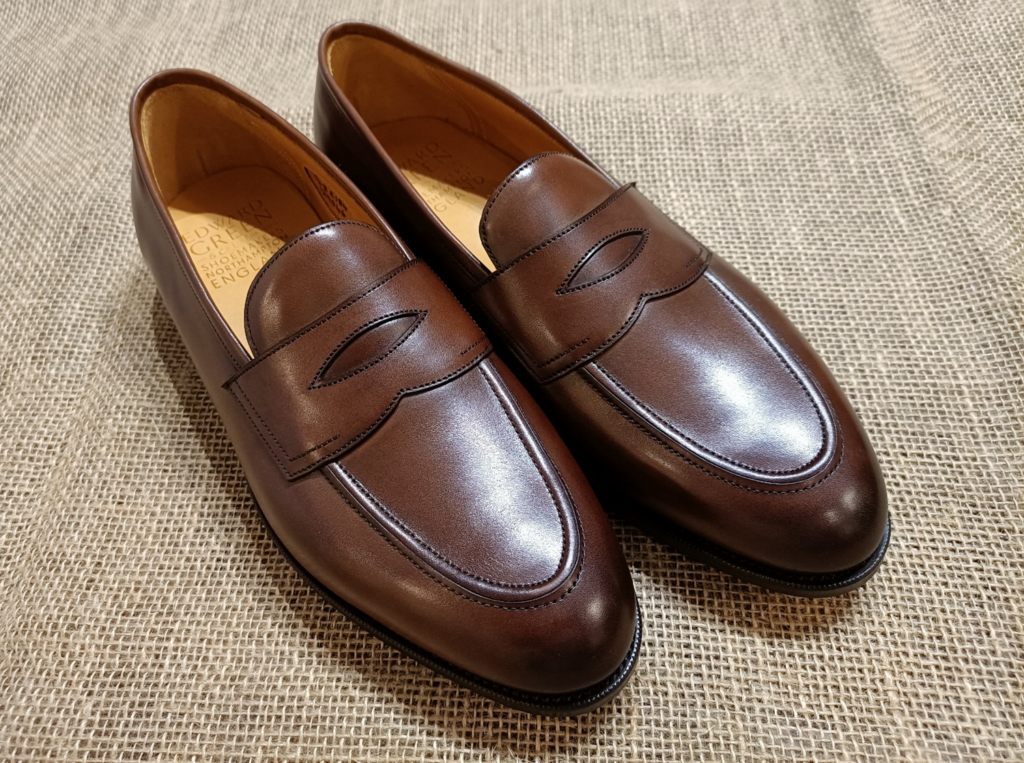
Piccadilly is very recognizable by the free form of the penny strap, the willow leaf. I always feel like they look like alien eyes too. Edward Green is praised worldwide for his craftsmanship, but where is the craftsmanship? Pay attention to the apron.
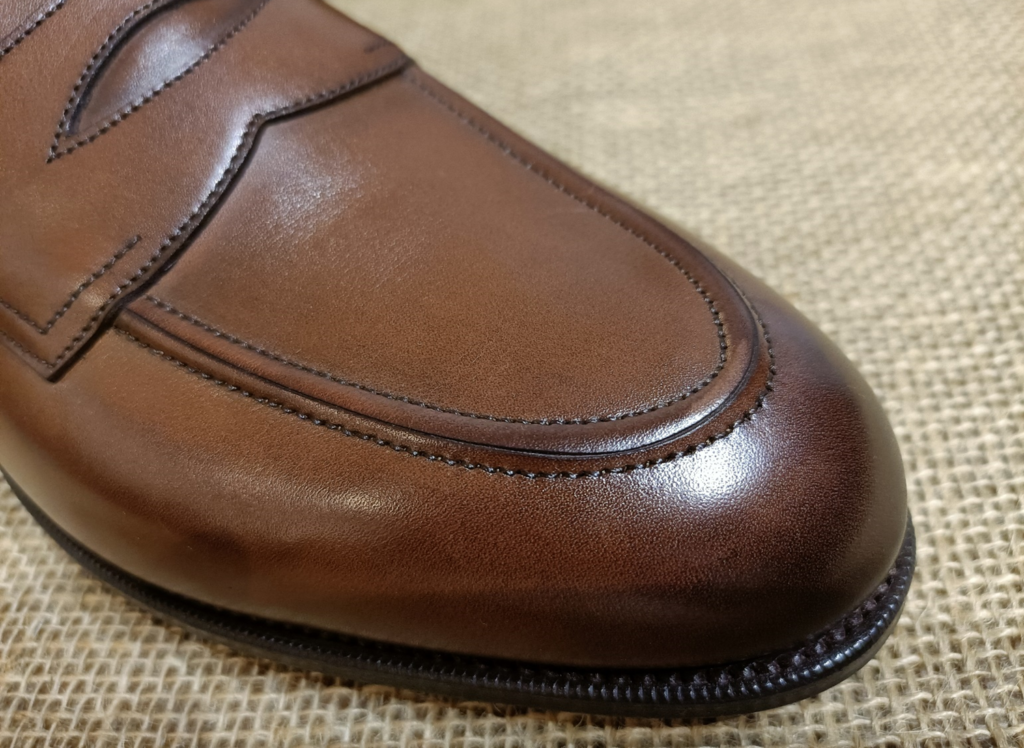
Butt stitching is the most common form, and the most traditional and acceptable to me. piccadilly is not! See the seam in the middle? The interface is particularly tight because the leather edges are skived thin, like the apron area of J.M. Weston 180.
You can see the density of this upper stitching is very high. Among so many shoes I put my hands on, Edward Green and Foster & Son are most impressive.
Leather
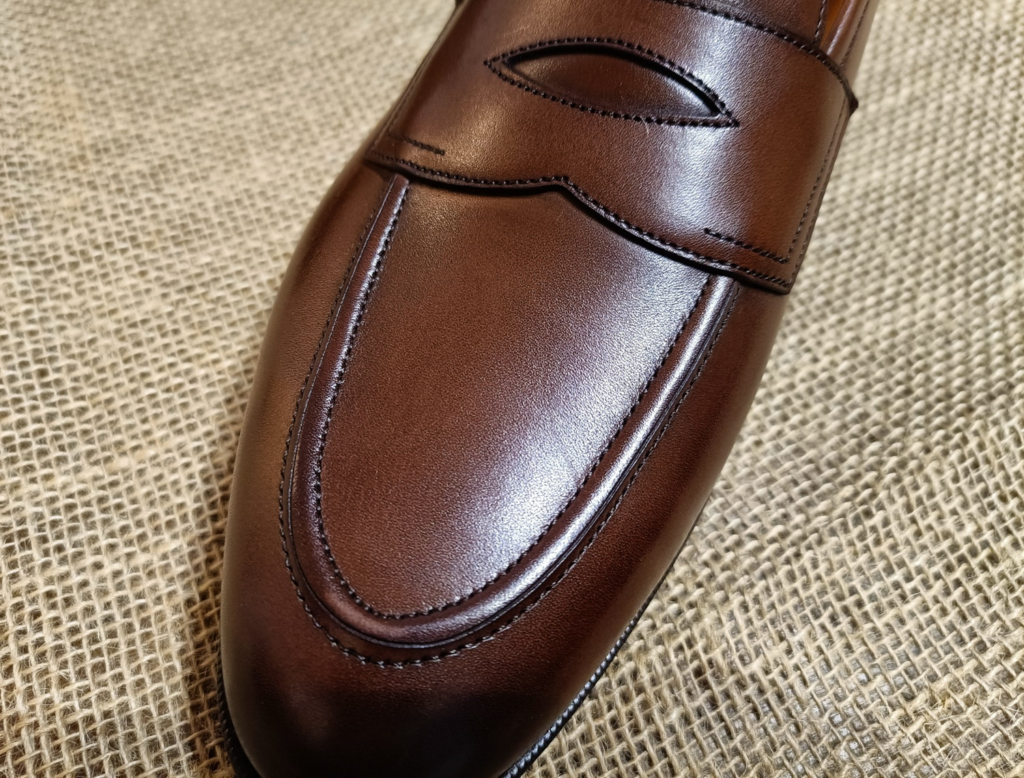
Stability of leather quality is considered a very big selling point of Edward Green, and so many seasoned connoisseurs choose it for this reason. I am very concerned about leather creases; good leather gives me psychological satisfaction while terrible creases make me miserable.
Leather quality stability is one side, Edward Green as the pioneer and trend-setter on new leather is what most people miss. Take an example, Utah leather from French tannery Haas was brought up to spotlight by Edward Green. I don’t say Edward Green is the first user of this leather because there is no information and data, but when discuss shoe brand using Utah leather, Edward Green is the first one entering my head.
This pair is made of Haas’s Nevada leather, which Edward Green and Church’s use the most. The strange thing is except these two, other premium brands do not use this leather.
The super-soft, large-grain leather I learned about last year, English Grain, was also pioneered by Edward Green under the name London Grain.
We have discussed many times that John Lobb started the trend of museum leather but neglected to mention that Edward Green brought up more leather.
Construction
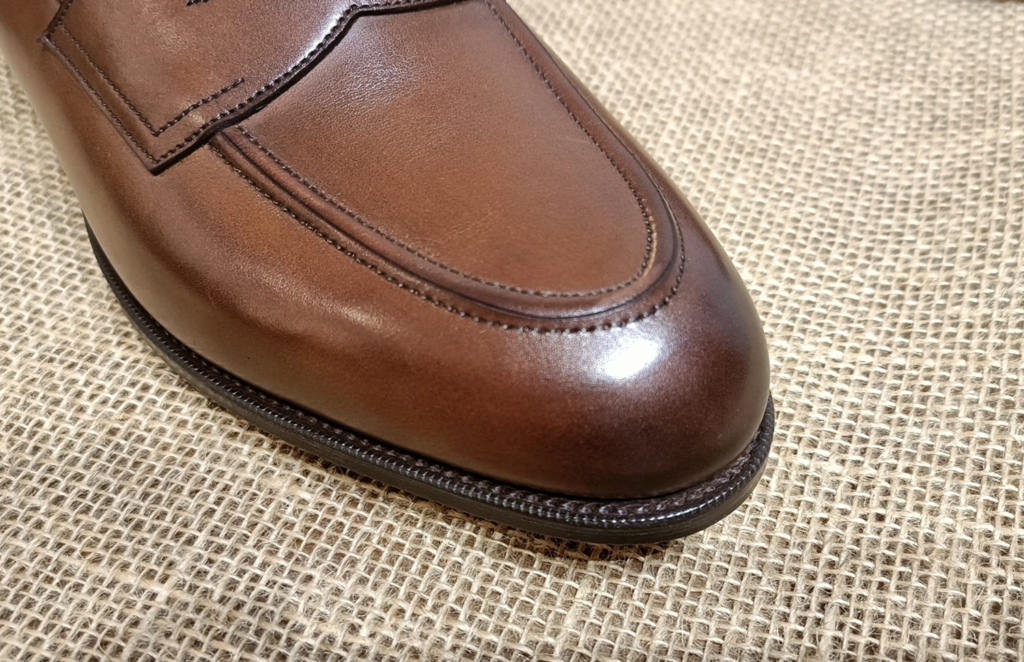
Welt workmanship of Edward Green is opinion, more refined than John Lobb, or at least John Lobb Classic collection. By Goodyear standards, the dense stitching, the delicate feel of fudge and narrow welt width make the shoe look very sophisticated and upscale.
I mentioned that welt width of toe of Edward Green is narrower than side and the fudge is also less obvious.
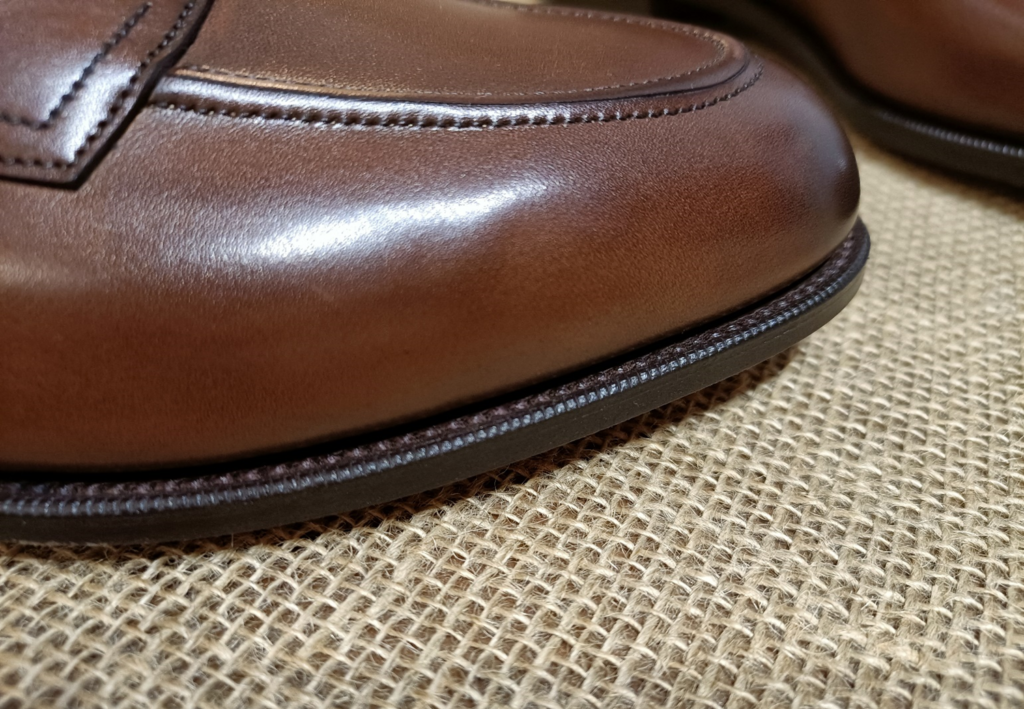
This angle is perhaps clearer that from the top, welt is not even visible.
Outsole
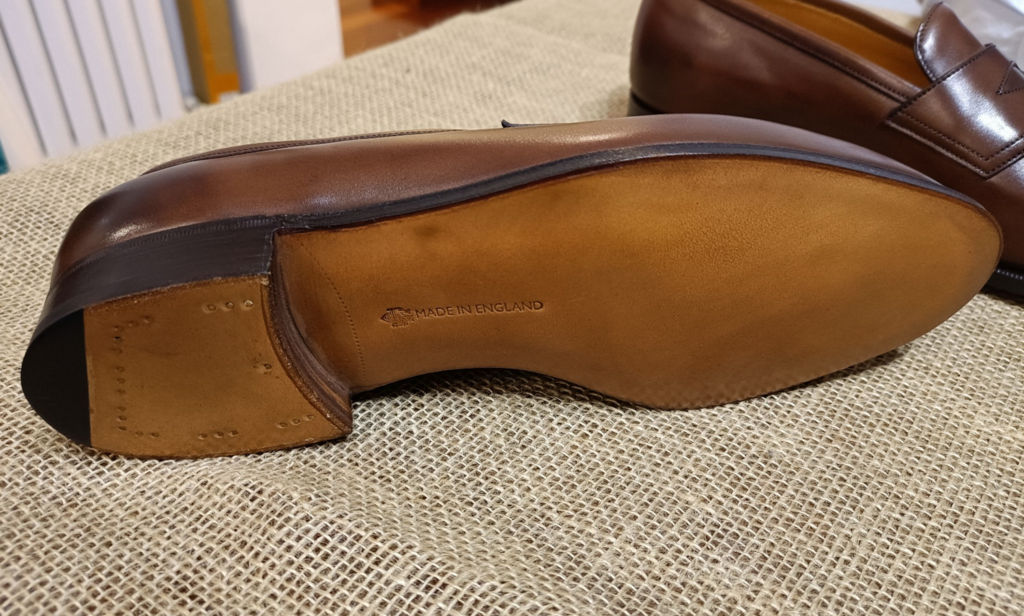
The sole is a uniform crust color and waxed.
Details
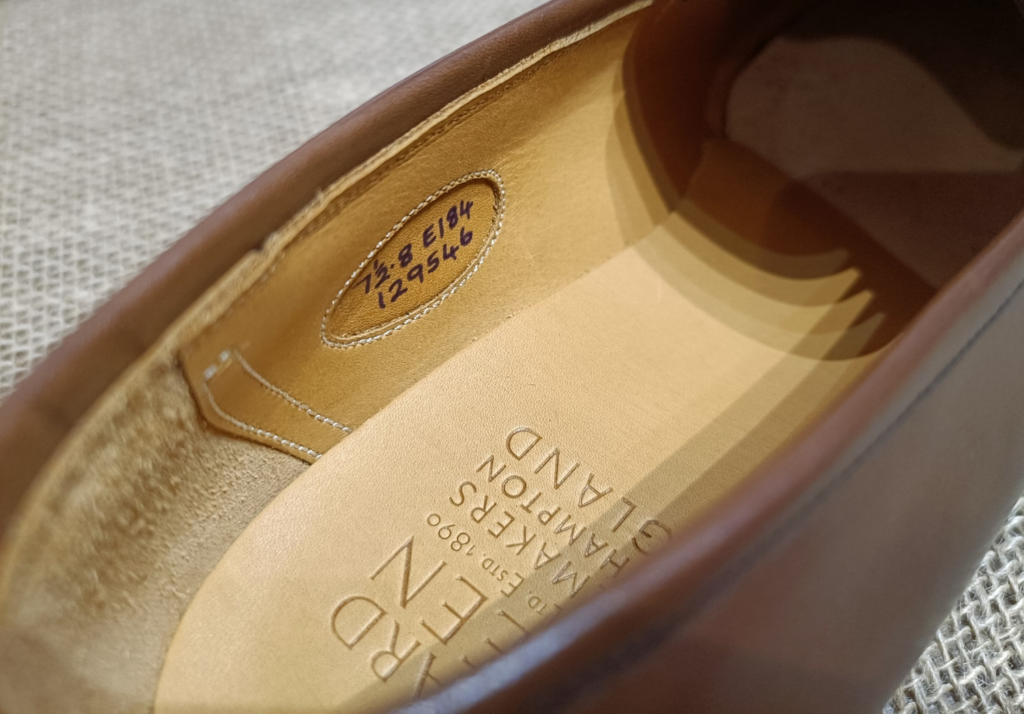
The classic little circle with the information inside, but no style name, just that long serial number in the second line, I think Chinese shoemaker Mattina does a better job with this.
Summary
On Edward Green’s exquisite sole and upper craftsmanship, I think back to the days when John Lobb just launched Ready to Wear collection, the two competed with each other to make the shoes better all around. Today, a bunch of Spanish and Chinese shoemakers are actually doing the same thing. It’s just that when we are in the middle of it and we may not feel it, only when we look back and know that we made history.

